On August 20…
“What I see behind the photo is what it took to get up to those heights – the kind of devotion to their country that those young men had, and the sacrifices they made. I take some gratification in being a little part of what the U.S. stands for. I took the picture. The Marines took Iwo Jima.”
~Joe Rosenthal
AP Photographer
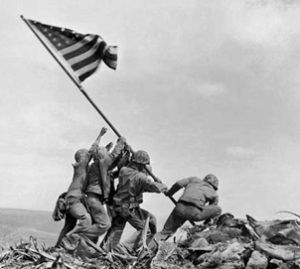
This Photo Is Here Today For A Reason
==========================================

1852 – Steamboat Atlantic sank in Lake Erie after a collision with the steamer Ogdensburg.
With over 250 passengers already on deck, the Atlantic stopped at Erie, Pennsylvania to pick up Norwegian immigrants waiting for ships to take them west to Detroit. The ship was now dangerously overcrowded, with up to 500 people aboard.
Meanwhile, the Ogdensburg was heading the other way, from Cleveland to Ogdensburg, NY, carrying a load of wheat. At 2 a.m., the paths of the two ships crossed when Atlantic suddenly changed course, turning north as though trying to pass in front of Ogdensburg.
The wheat steamer rammed Atlantic on the port side, near the paddlewheel, cutting into the ship’s side down to the waterline. An attempt was made to launch three lifeboats; one capsized and the other two were filled, not with passengers, but with crewmen.
The crew of Ogdensburg took hundreds of survivors off Atlantic’s stern, but too many other passengers were already in the water. The ship did not carry detailed passenger lists, but estimates range from up to 300 lives were lost, with an estimated death toll of 250 being common.
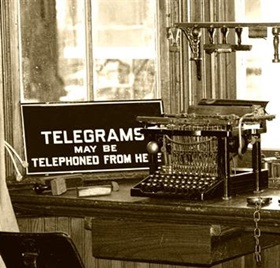
1911 – In an effort to determine how fast a commercial message could be sent around the world by telegraph cable, a dispatcher in the New York Times office sent the first global telegram via a commercial service.
The message, reading simply “This message sent around the world,” left the Times building in New York at 7 p.m. After it traveled more than 28,000 miles, being relayed by 16 different operators, through San Francisco, the Philippines, Hong Kong, Saigon, Singapore, Bombay, Malta, Lisbon and the Azores – among other locations – the reply was received by the same operator 16.5 minutes later.
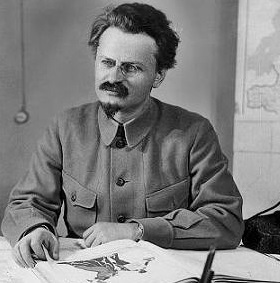
1940 – Exiled Russian revolutionary Leon Trotsky was fatally wounded by an ice-ax-wielding assassin at his compound outside Mexico City. The killer – Ramón Mercader – was a Spanish communist and probable agent of Soviet leader Joseph Stalin. Trotsky died from his wounds the next day.
An ally of Bolshevik revolutionary Vladimir Lenin – and at one time his heir apparent – Trotsky fell into disfavor when Stalin emerged as leader of the USSR. In 1927, Trotsky was expelled from the Communist Party, and in 1929, he was banished from the USSR forever by Stalin.
He was welcomed by the government of Turkey and settled on the island of Prinkipo, where he worked on finishing his autobiography and history of the Russian Revolution.
In 1936, Trotsky was granted asylum in Mexico. Settling with his family in a suburb of Mexico City, he was found guilty of treason in absentia during Stalin’s purges of his political foes. He managed to escape one assassination attempt but on this date, he could not escape the second.
The Soviet government denied responsibility and Mercader was sentenced to 20 years in prison by Mexican authorities.
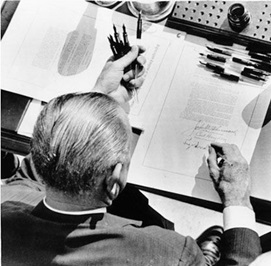
1964 – President Lyndon Johnson signed the Economic Opportunity Act, a nearly $1 billion anti-poverty measure. The act – which was centerpiece of Johnsons “war on poverty” – created the Community Action Program, Job Corps and Volunteers in Service to America.
In the decade following, poverty rates in the U.S. dropped to their lowest level since comprehensive record keeping began in 1958: from 17.3% in the year the Economic Opportunity Act was implemented to 11.1% in 1973. They have remained between 11 and 15.2% ever since.
It is important to note, however, that the steep decline in poverty rates began in 1959, 5 years before the introduction of the war on poverty.
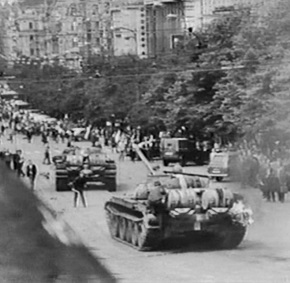
1968 – In the face of rising anti-Soviet protests in Czechoslovakia, Soviet troops (backed by troops from other Warsaw Pact nations) intervened to crush the protest and restore order. The brutal Soviet action shocked the West and dealt a devastating blow to U.S.-Soviet relations.
The troubles in Czechoslovakia began when Alexander Dubcek took over as secretary general of the nation’s Communist Party in January 1968. It was immediately apparent that Dubcek wanted a major overhaul of Czechoslovakia’s political and economic system – in his words – “Socialism with a human face.”
Czech citizens embraced and celebrated the new tolerance for free exchange of ideas and open discussion in what came to be known as the “Prague Spring.”
In response – on this date – more than 200,000 Warsaw Pact troops crossed into Czechoslovakia and headed for the capital city of Prague. In just over a day, the entire country was occupied; within a week nearly three-quarters of a million foreign troops were in Czechoslovakia. Anti-Soviet riots broke out in Prague, but these were viciously crushed and thousands of Czechs fled the country.

1977 – NASA launched Voyager II, an unmanned 1,820-pound spacecraft, from Cape Canaveral, Florida. It was the first of two such crafts to be launched that year on a “Grand Tour” of the outer planets, organized to coincide with a rare alignment of Jupiter, Saturn, Uranus and Neptune.
Aboard Voyager II was a 12-inch copper phonograph record called “Sounds of Earth.” Intended as a kind of introductory time capsule, the record included greetings in 60 languages and scientific information about Earth and the human race, along with classical, jazz and rock and roll music, nature sounds like thunder and surf, and recorded messages from President Jimmy Carter and other world leaders.
The record was sealed in an aluminum jacket that would keep it intact for 1 billion years, along with instructions on how to play the record, with a cartridge and needle provided.

1986 – In Edmond, Oklahoma, U.S. Postal employee Patrick Sherrill gunned down 14 of his co-workers and then committed suicide.
Shortly after 7 a.m., Sherrill – a part-time mail carrier with a troubled work history – killed Richard Esser, Jr., one of two supervisors who had verbally disciplined him the previous day. Sherrill then sought out Bill Bland, another supervisor who had reprimanded him. By an incredible stroke of luck, Bland had overslept that morning and arrived an hour late to work, by which time the shootings were already over.
The other thirteen workers – plus an additional six who were wounded in the attack – were not as fortunate.
The shooting coined the phrase “going postal” and at the time it was the third largest mass shooting in American history.

1988 – Almost 250 different fires started in Yellowstone National Park and the surrounding National Forests between June and November 1988, but the single worst day of the fires and later dubbed “Black Saturday”, came on this date.
More than 150,000 acres were consumed during one of many intense fires. Ash from the fires throughout the park drifted as far away as Billings, Montana, 60 miles to the northeast.
The wind driven flames jumped roads and firelines, and burning embers started new fires a mile or more ahead of the main fires. On that single day, more Yellowstone land burned than in all other fires combined since the establishment of the park.

1989 – Lyle and Erik Menendez shot their parents to death in the den of the family’s Beverly Hills home. Jose Menendez, 45, was shot in the back of the head and his wife, Kitty, 47, was shot 15 times.
The brothers dumped their shotguns on Mulholland Drive before continuing to a local movie theater to buy tickets as an alibi. When the pair returned home, Lyle called 911 and cried, “Somebody killed my parents!”
Although the pair were not immediately suspected, Erik couldn’t take the guilt and confessed his involvement to his psychotherapist, Dr. L. Jerome Oziel. Ignoring his own ethical responsibilities, Dr. Oziel taped the sessions with his new patient in an apparent attempt to impress his mistress. But the woman ended up going to the police with her information and, in March 1990, Lyle, 22, and Erik, 19, were arrested.
For the next three years, a legal battle was fought over the admissibility of Dr. Oziel’s tapes. Finally, the California Supreme Court ruled that the tapes could be played.
When the trial began in the summer of 1993, the brothers emotionally described years of sexual abuse by Jose and Kitty Menendez. They insisted that they had shot their parents in self-defense because they believed that Jose would kill them rather than have the abuse be exposed.
The first two juries (one for each brother) deadlocked, and a mistrial for each was declared. At the retrials, which began in October 1995, the judge was much more restrictive in allowing the defense attorneys to focus on the alleged sexual abuse. In March 1996, both Lyle and Erik were convicted and sentenced to life in prison.

2006 – Joe Rosenthal, an AP photographer who received the Pulitzer Prize for his iconic World War II photograph Raising the Flag on Iwo Jima, taken during the Battle of Iwo Jima, died of natural causes at the age of 94.
Rosenthal’s photograph – shown at the top of this column – became an enduring icon. It was used as a model for the United States Marine Corps War Memorial – commonly referred to as “The Iwo Jima Memorial” – at Arlington, Virginia, and the U.S. Postal Service commemorated the photo on a U.S. postage stamp.

2017 – Jerry Lewis, the slapstick-loving comedian, innovative filmmaker and generous fundraiser for the Muscular Dystrophy Association, died from heart failure due to peripheral vascular disease. He was 91.
Lewis and his “straight man” Dean Martin were a top-rated nightclub and stage act, and appeared in 17 movies before a bitter breakup sent Lewis out on his own.
He went on to star in, motion pictures. One of the most successful performers in show business, with worldwide box office receipts of his films (many of which he also wrote, produced and directed) in excess of $800 million, Lewis received global acclaim for his unique ability and style with both comedy and drama.
Outside of his career, Lewis supported fundraising for muscular dystrophy research, serving for 60 years as national chairman of and spokesman for the Muscular Dystrophy Association and as host of The Jerry Lewis MDA Labor Day Telethon every Labor Day weekend for 44 years.
In his will, Lewis left his estate to his second wife of 34 years, SanDee Pitnick, and their daughter, and intentionally excluded his six sons from his first marriage as well as their descendants.
So much for being one of “Jerry’s Kids”.
Compiled by Ray Lemire ©2018 RayLemire.com. / Streamingoldies.com. All Rights Reserved.